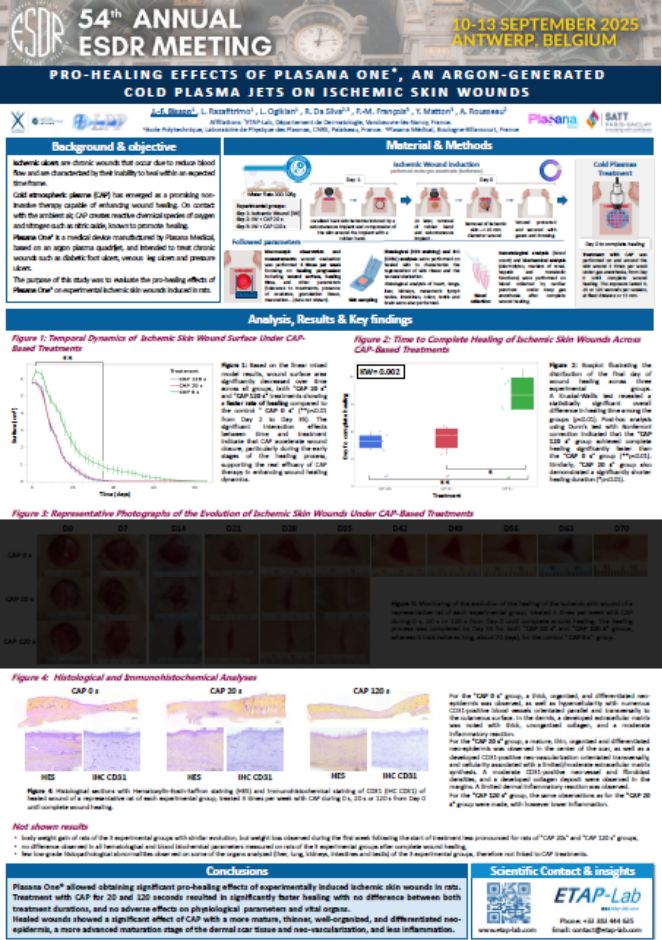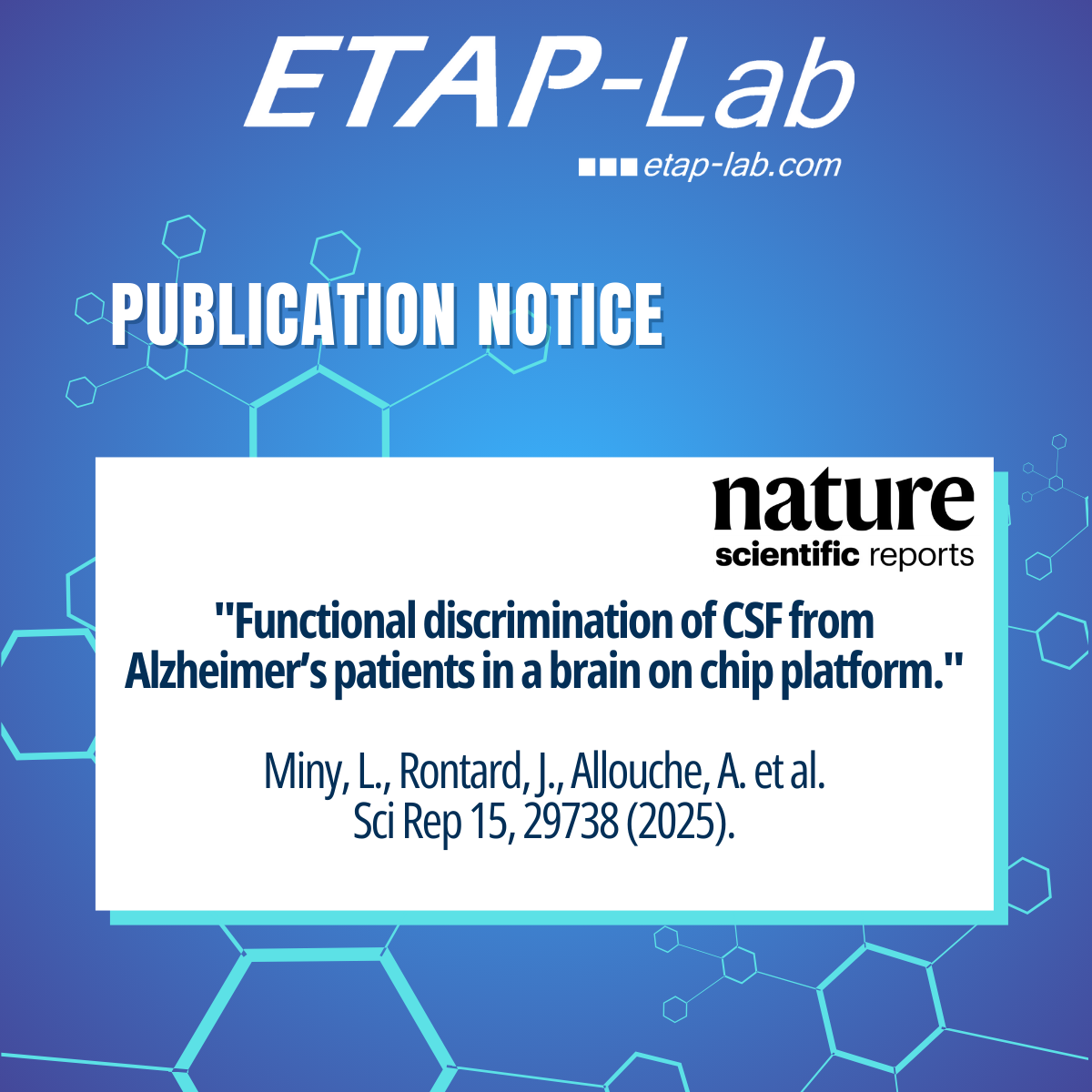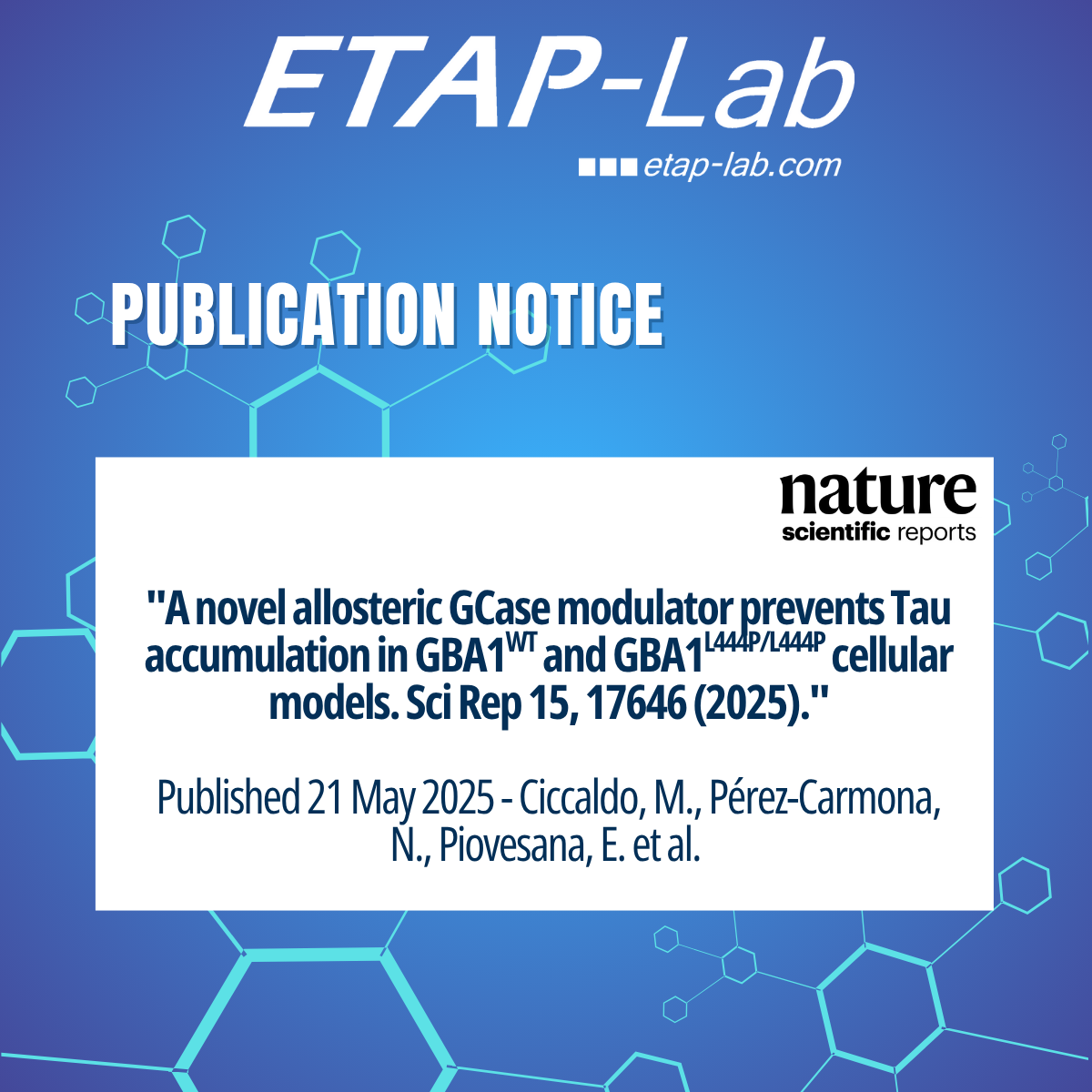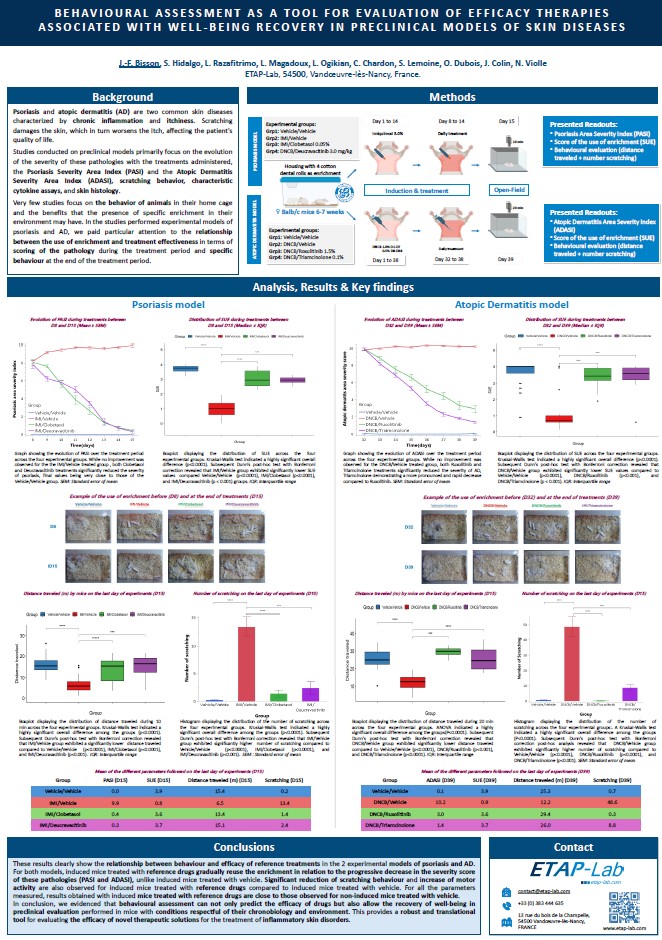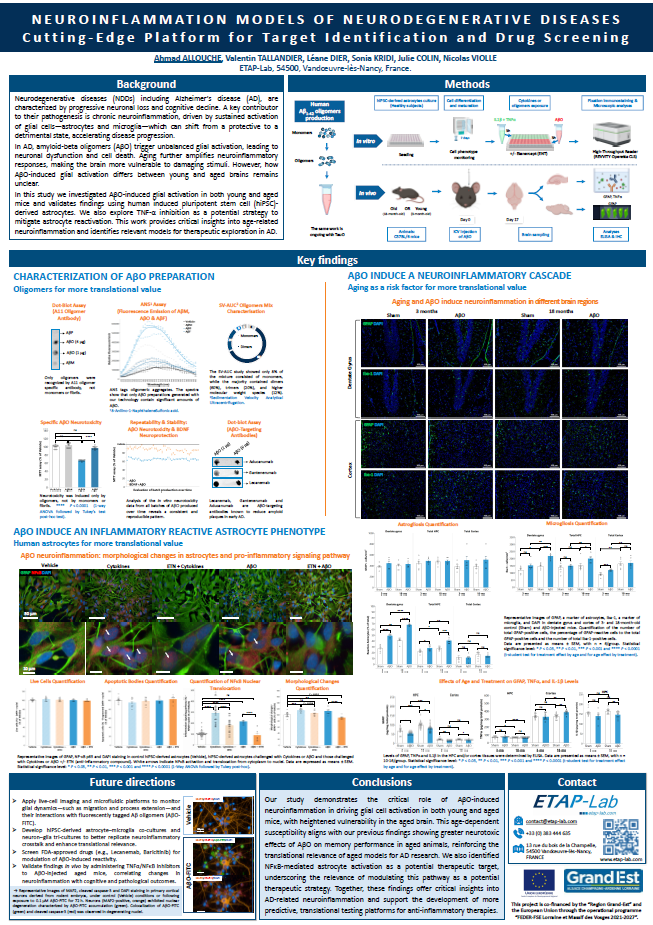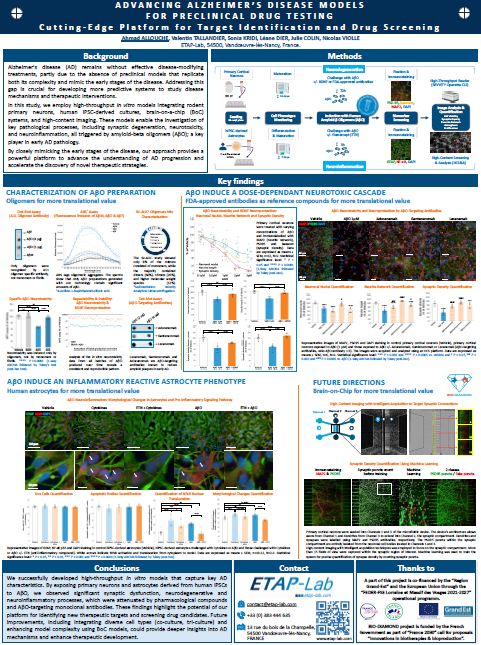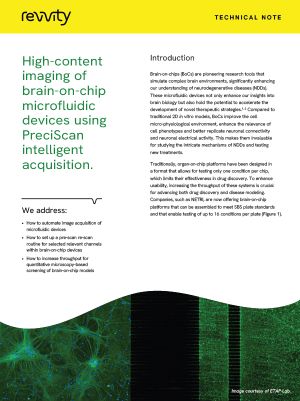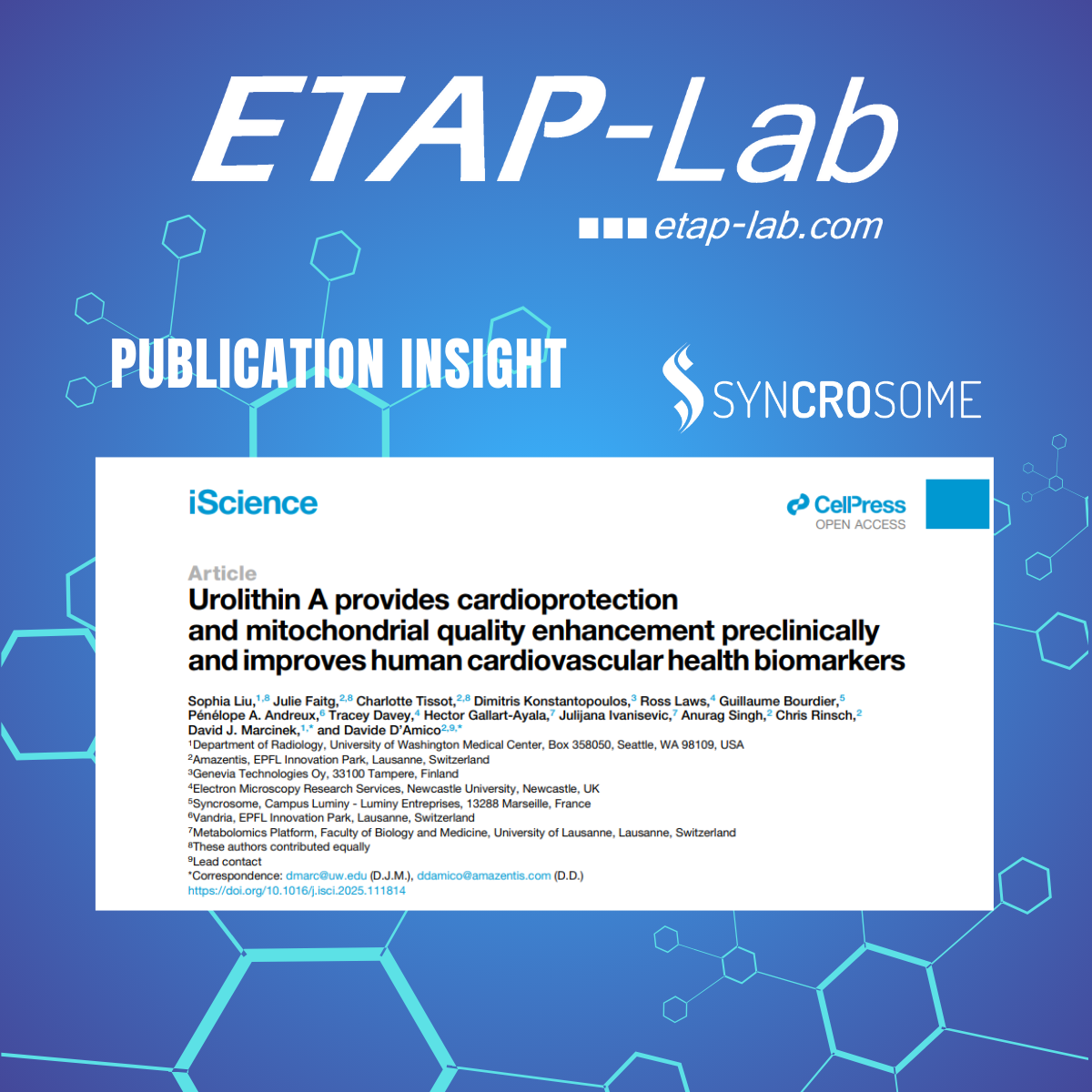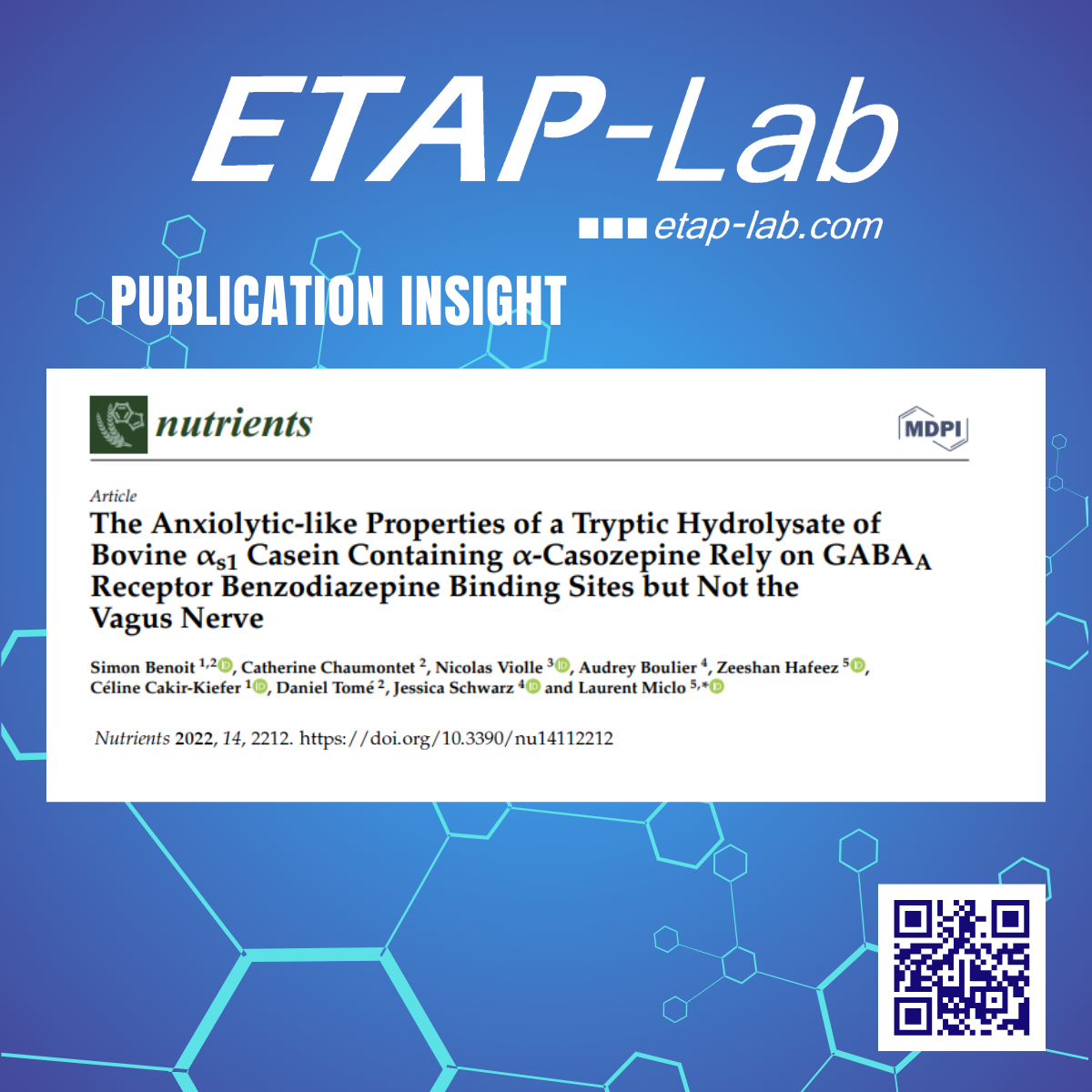POSTER: “Pro-healing effects of Plasana One®, an argon-generated cold plasma on ischemic skin wounds”
Discover the excellent results on ischemic skin wounds in our Poster: "Pro-healing effects of Plasana One®, an argon-generated cold plasma on ischemic skin wounds”. Presented by Jean-François Bisson at the European Society for Dermatological Research (ESDR 2025, Antwerp, Belgium), featuring results from a client study on our ischemic skin wound model, conducted in collaboration with École Polytechnique, Laboratoire de Physique des Plasmas & Plasana Médical. 💡This study contributed to the preclinical development of the Plasana One® technology, an innovative device which is
Publication on Functional discrimination of CSF from Alzheimer’s patients in a brain on chip platform
Publication: Functional discrimination of CSF from Alzheimer’s patients in a brain on chip platform. Sci Rep 15, 29738 (2025). Authors: Miny, L., Rontard, J., Allouche, A. et al. Affiliated: NETRI (Lyon, France) Hospices Civils de Lyon – Department of Biochemistry and Molecular Biology, Neurodegenerative Pathologies (Bron, France) Lyon Neurosciences Research Center (CNRS UMR 5292 / INSERM U1028) ETAP-Lab – Preclinical Efficacy CRO (Vandoeuvre-Lès-Nancy, France) Abstract: Neurodegenerative diseases, including Alzheimer’s disease (AD), present significant diagnostic challenges due to overlapping symptoms and the invasive, time-consuming, and costly nature
Publication on NDD’s cellular models – Scientific Reports (Nature)
Consult the publication in which ETAP-LAB was mentioned and acknowledged for our in vitro hippocampal neuron model—challenged with own-manufactured Tau oligomers: "A novel allosteric GCase modulator prevents Tau accumulation in GBA1WT and GBA1L444P/L444P cellular models. Sci Rep 15, 17646 (2025)." Published 21 May 2025 - Ciccaldo, M., Pérez-Carmona, N., Piovesana, E. et al. https://www.nature.com/articles/s41598-025-02346-8 Authors: Matteo Ciccaldo1, Natàlia Pérez-Carmona2, Ester Piovesana1, Sara Cano-Crespo2, Ana Ruano2, Aida Delgado2, Ilaria Fregno3, Beatriz Calvo-Flores Guzmán4, Manolo Bellotto4, Maurizio Molinari3,5, Joanne Taylor6, Stéphanie Papin1, Ana María
POSTER: Behavioural assessment as a tool for evaluation of efficacy therapies on skin diseases
Dr Jean-François BISSON, PhD, and Lianna RAZAFITRIMO, presented the team’s research during the SPIN 2025 (Congress of the Skin Inflammation & Psoriasis International Network) in the poster: "Behavioural assessment as a tool for evaluation of efficacy therapies associated with well-being recovery in preclinical models of skin diseases". Learn more about our preclinical services in Dermatology in the poster! Until the poster is available here, don’t wait any longer and ask for the poster in PDF! [mkdf_button size="" type="" text="EASY REQUEST OF POSTER" custom_class="" icon_pack="font_awesome" fa_icon=""
POSTER: High-throughput Brain-on-Chip for neurogenerative diseases
Dr Valentin TALLANDIER, in vitro Preclinical Project Leader, presented the team’s research during the MPS World Summit 2025 in Brussels in his poster. Learn more about our high-thoughput capacitites for neurogenerative diseases in the poster! Until the poster is available here, don’t wait any longer and ask for the poster in PDF! Authors: Valentin TALLANDIER, Ahmad ALLOUCHE, Julie COLIN, Léane Dier, Sonia KRIDI, Nicolas VIOLLE Abstract: Synaptic plasticity alterations are a hallmark of cognitive decline in neurodegenerative diseases (NDD). Synaptic loss occurs at early stages of the
POSTER: “NEUROINFLAMMATION MODELS OF NEURODEGENERATIVE DISEASES”
Dr Ahmad Allouche, Head of in vitro biology, presented the team’s research* during at Venusberg Neuroinflammation Meeting 2025 in Luxembourg in his poster “NEUROINFLAMMATION MODELS OF NEURODEGENERATIVE DISEASES“. Learn more about our cutting-edge platform for target identification & drug discovery in the poster! Until the poster is available here, don’t wait any longer and ask for the poster in PDF! *Ahmad ALLOUCHE, Valentin TALLANDIER, Léane DIER, Sonia KRIDI, Julie COLIN, Nicolas VIOLLE.
POSTER: “ADVANCING ALZHEIMER’S DISEASE MODELS FOR PRECLINICAL DRUG TESTING”
Dr Ahmad Allouche, Head of in vitro biology, presented the team's research* during AD/PD 2025 in Vienna in his poster "ADVANCING ALZHEIMER'S DISEASE MODELS FOR PRECLINICAL DRUG TESTING". Learn more about our cutting-edge platform for target identification & drug discovery in the poster! Until the poster is available here, don't wait any longer and ask for the poster in PDF! *Ahmad ALLOUCHE, Valentin TALLANDIER, Sonia KRIDI, Léane DIER, Julie COLIN, Nicolas VIOLLE
Technical Note: High-content imaging of brain-on-chip microfluidic devices using PreciScan intelligent acquisition.
Brain-on-chips (BoC) are innovative tools that simulate complex brain environments, enhancing our understanding of neurodegenerative diseases (NDDs). While a range of BoC platforms have been developed to model diverse NDD pathophysiologies, the various channel architectures of these microfluidic devices present challenges in image acquisition and analysis. High-content imaging protocols must be adaptable to these differing designs. This Technical Note, developed by Revvity in collaboration with ETAP-Lab, demonstrates an automated image acquisition protocol for BoC microfluidic devices. The protocol utilizes the Operetta
Exciting research publication from our cardiology lab SYNCROSOME as co-author
Cardiovascular diseases (CVDs) are the leading cause of global mortality. That's why we are proud to share a groundbreaking study titled "Urolithin A provides cardioprotection and mitochondrial quality enhancement preclinically and improves human cardiovascular health biomarkers". Liu, Sophia et al. iScience, Volume 28, Issue 2, 111814 This study highlights the potential of Urolithin A (UA), a post-biotic and mitophagy activator, to improve heart health by addressing mitochondrial dysfunctions. Preclinical model results show reduced cardiac dysfunction, while human trials indicate significant reductions
A signifiant milestone for our publication on Nutrients journal
We wanted to highlight on our recent article on our psychopharmacology research "The Anxiolytic-like Properties of a Tryptic Hydrolysate of Bovine αs1 Casein Containing α-Casozepine Rely on GABAA Receptor Benzodiazepine Binding Sites but Not the Vagus Nerve" that has reached over 3000 views in MDPI Nutrients journal! The published data on the anxiolytic-like properties of bovine αs1-casein (CH) support that: α-casozepine is responsive for the anxiolytic-like effects of the alpha-s1-casein tryptic hydrolysate (CH). CH anxiolytic-like effects are not mediated by the



